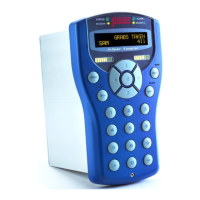SECTION 10: USER COMMANDS
The InSpec includes a facility to perform a number of simple calculations on registers. These are known
as user commands.
NOTE: This is only designed to solve simple problems and so more complex problems will require using
the programming language UCL.
10.1 Introduction
There are two sets of 20 user commands that can be executed, which are called either the INPUT or
OUTPUT set. The first set of commands (INPUT) is executed just before the application cycle executes and the
second set (OUTPUT) is executed just after the application cycle completes.
Each command requires two source registers a destination register and a command that is to be
executed on the two source registers, the result of which is stored within the destination register. If the destination
register is not large enough to store the result, the result will be truncated.
10.2 Command types
The types of commands that can be executed depend on the type of the destination register. These are
arranged into three groups, Integer registers support all commands, Floating point registers support some
commands and strings do not support commands. The following table shows all commands

